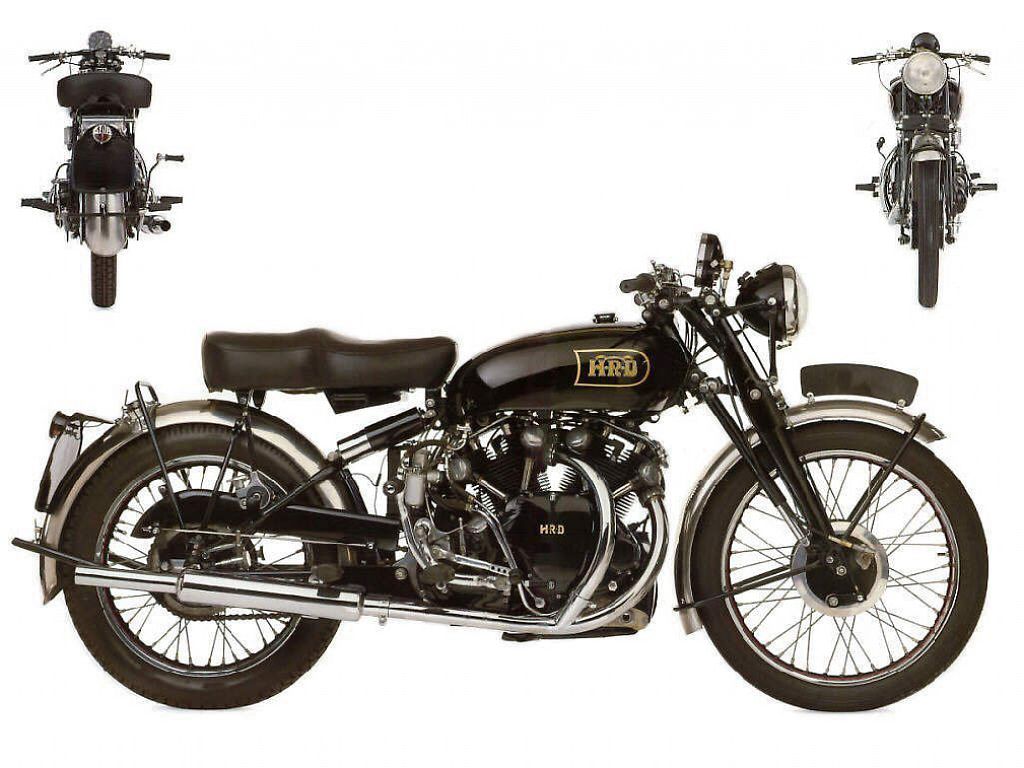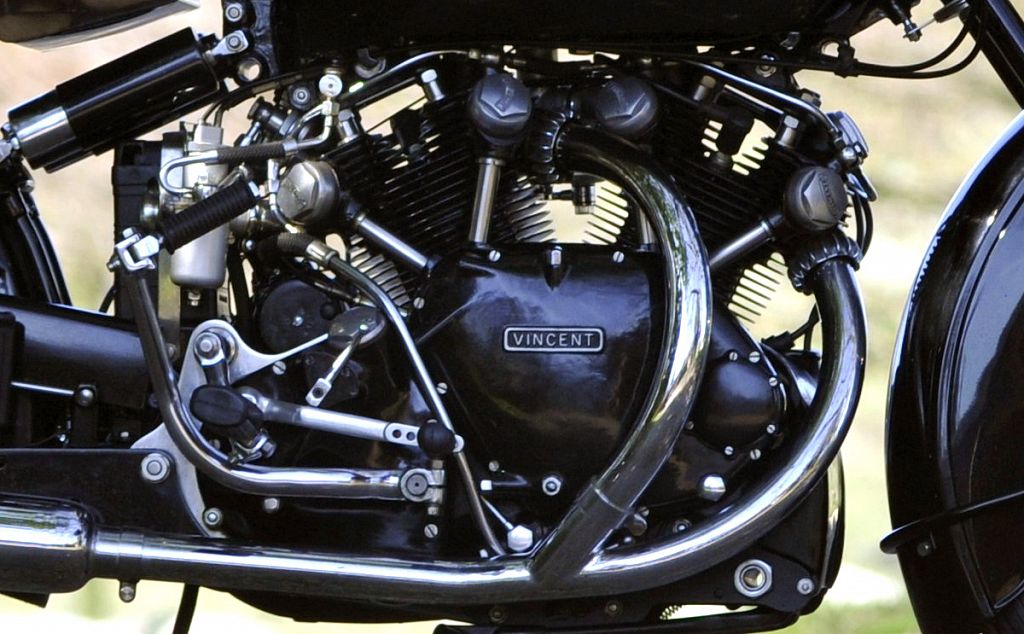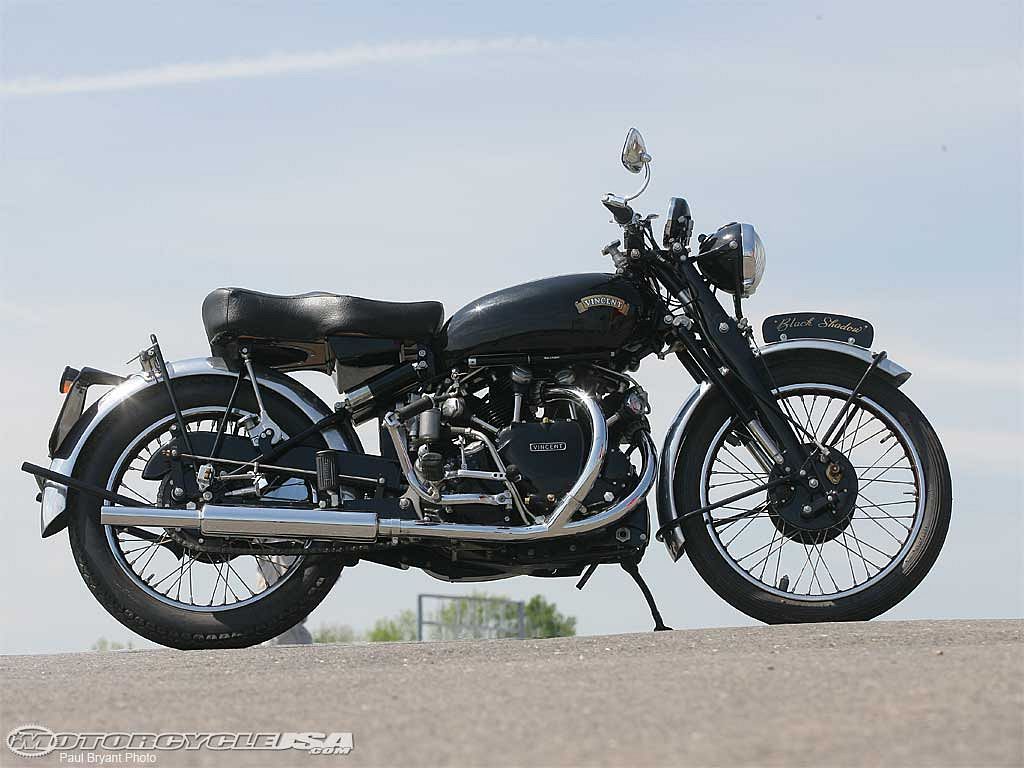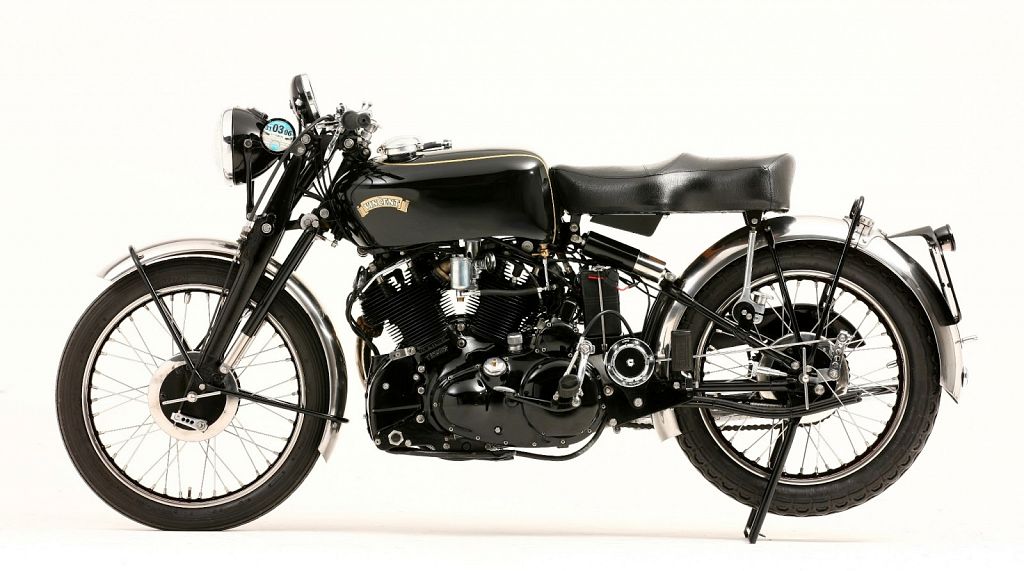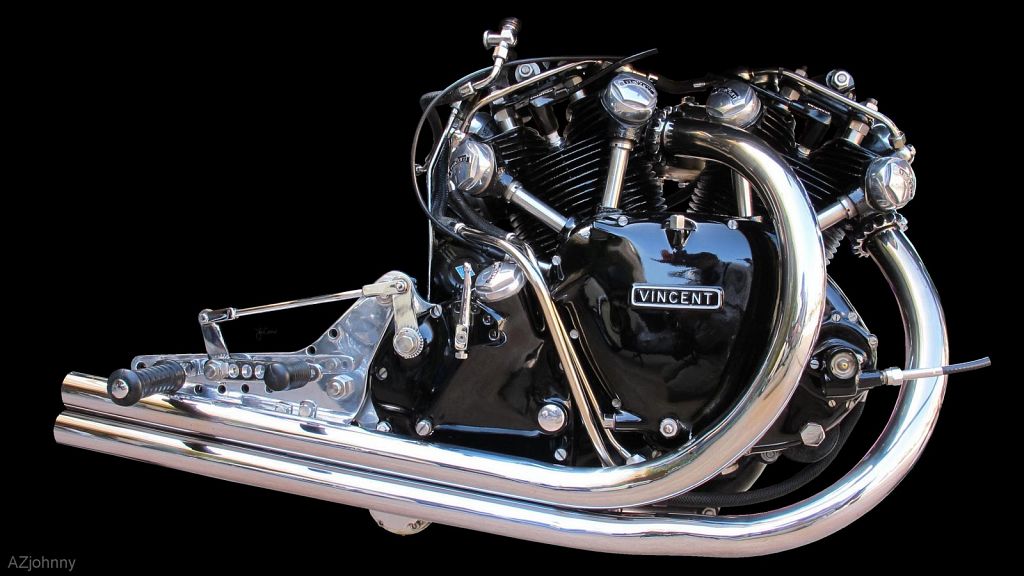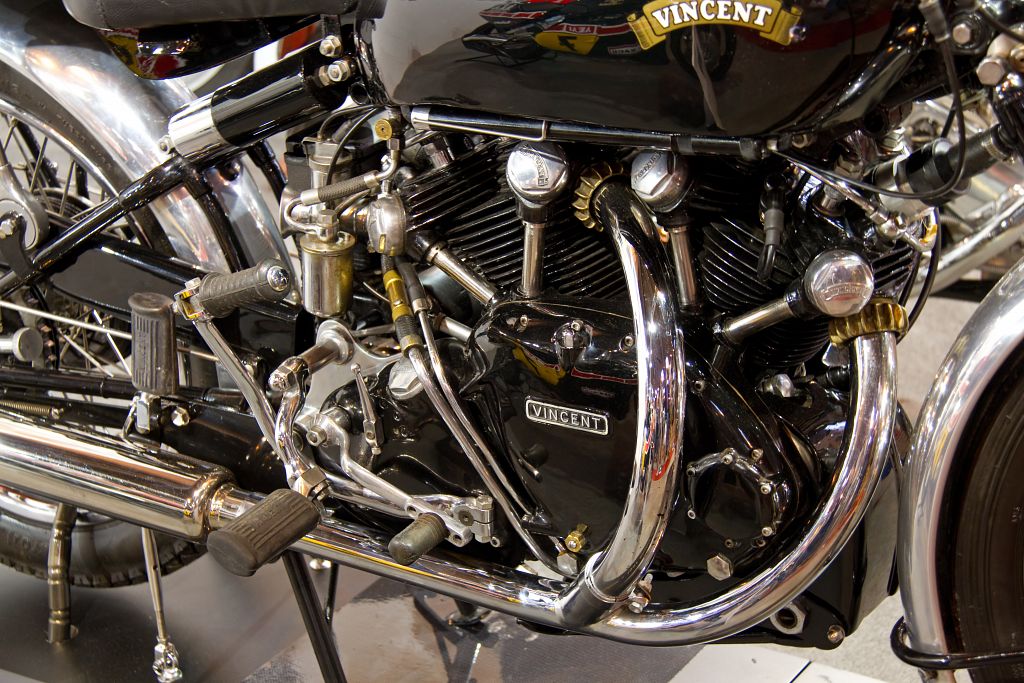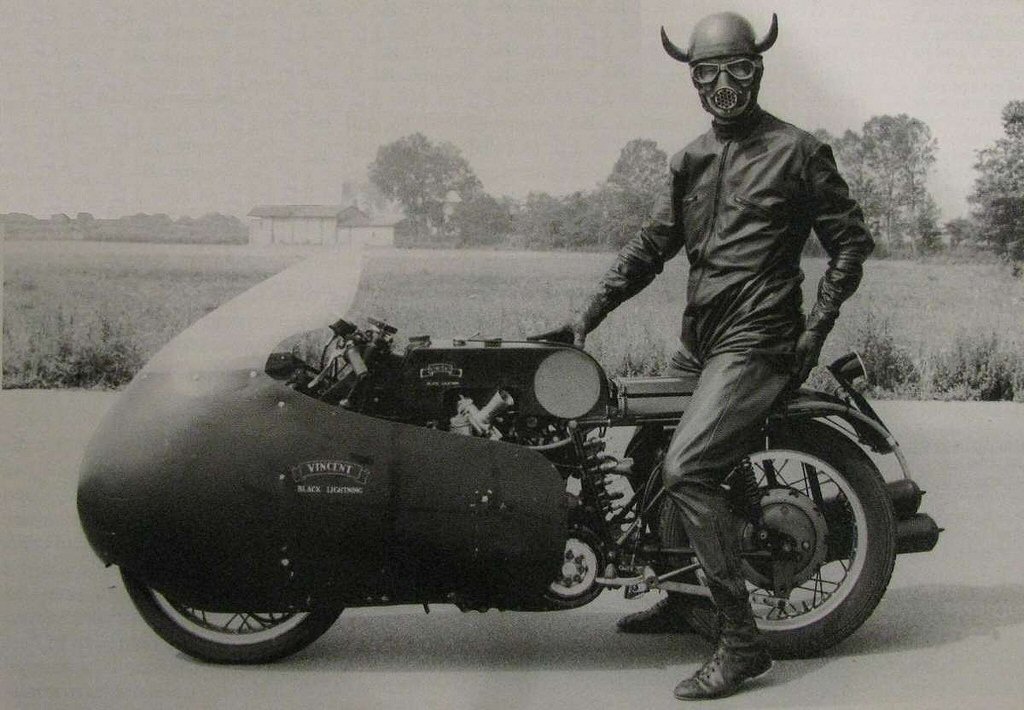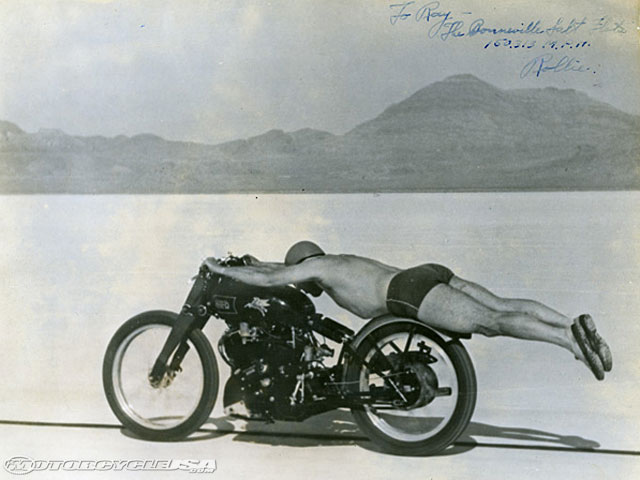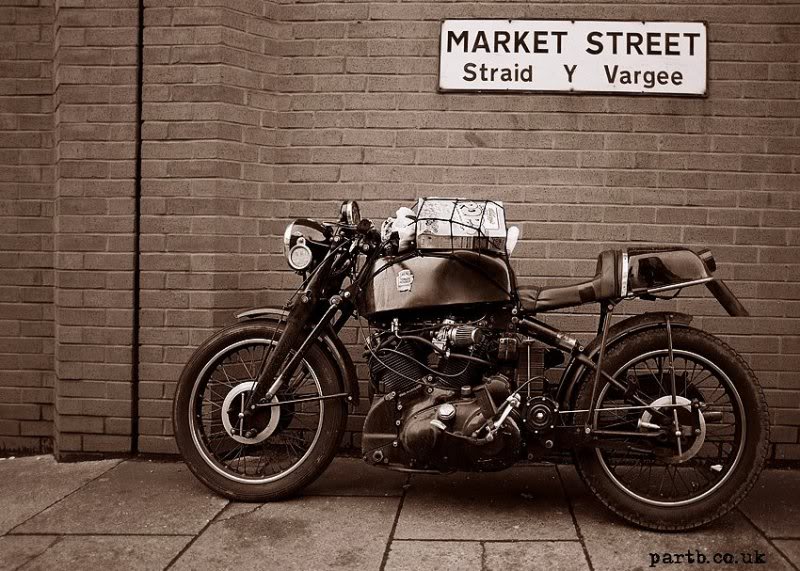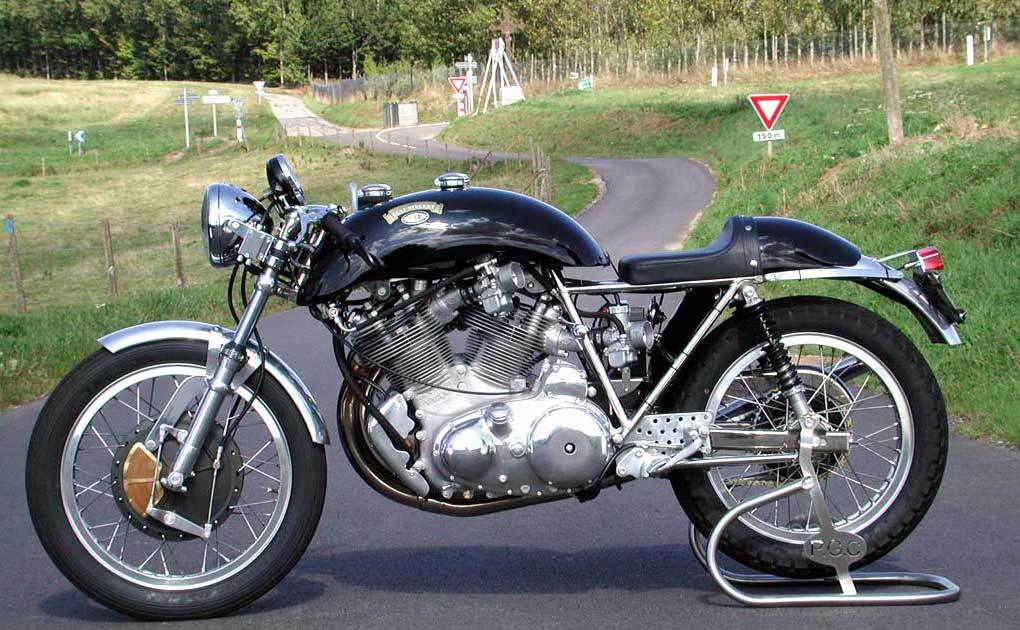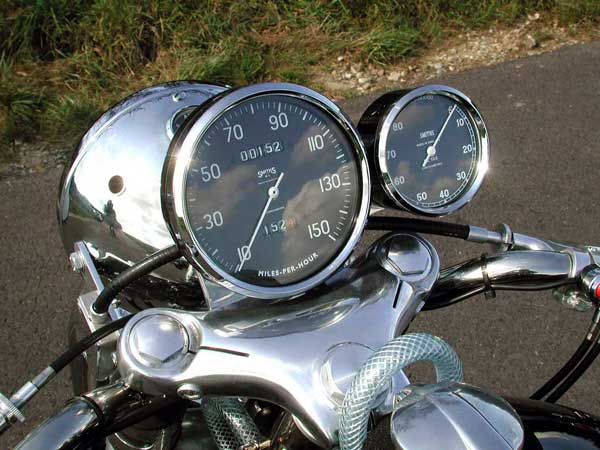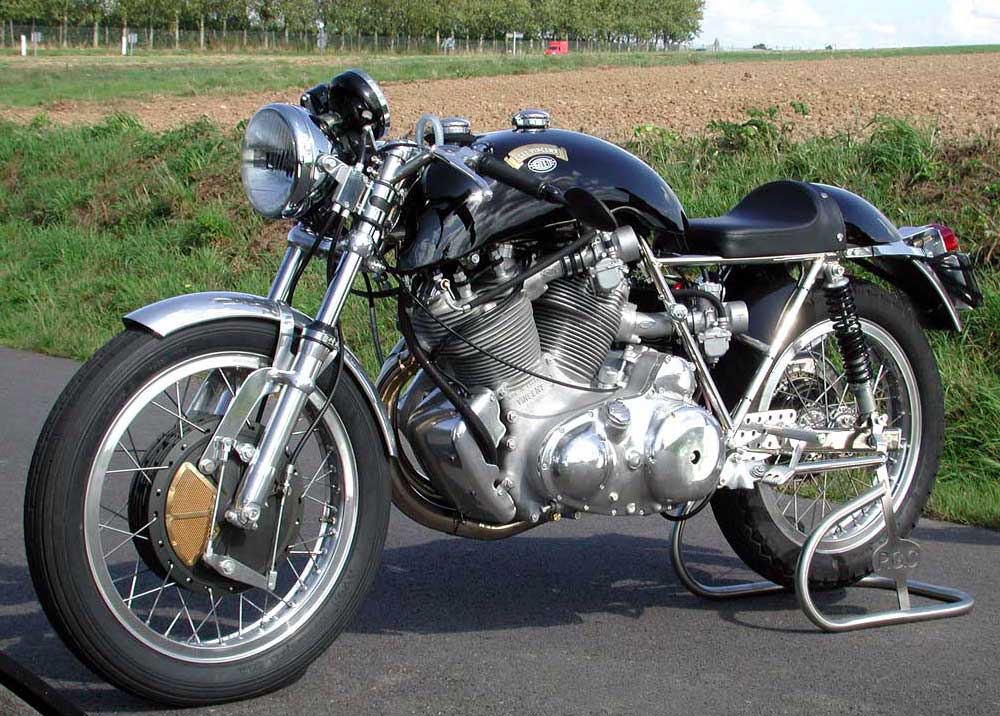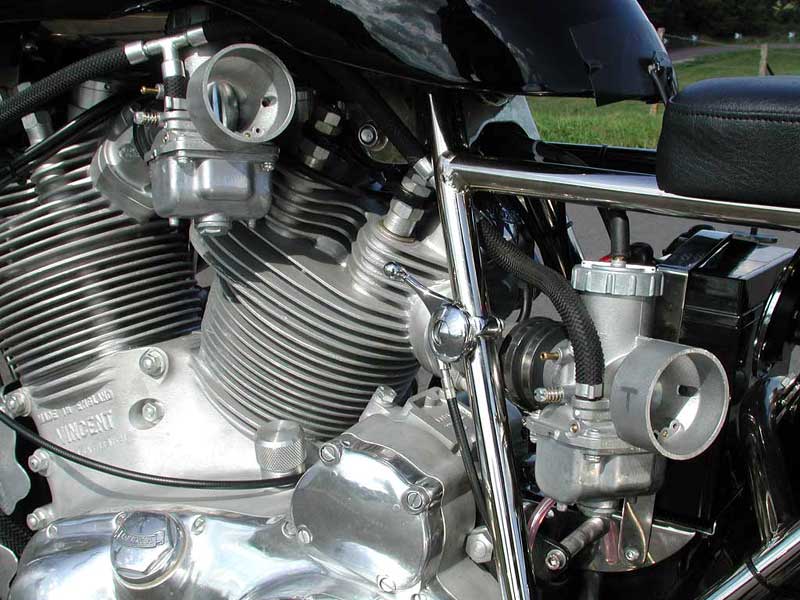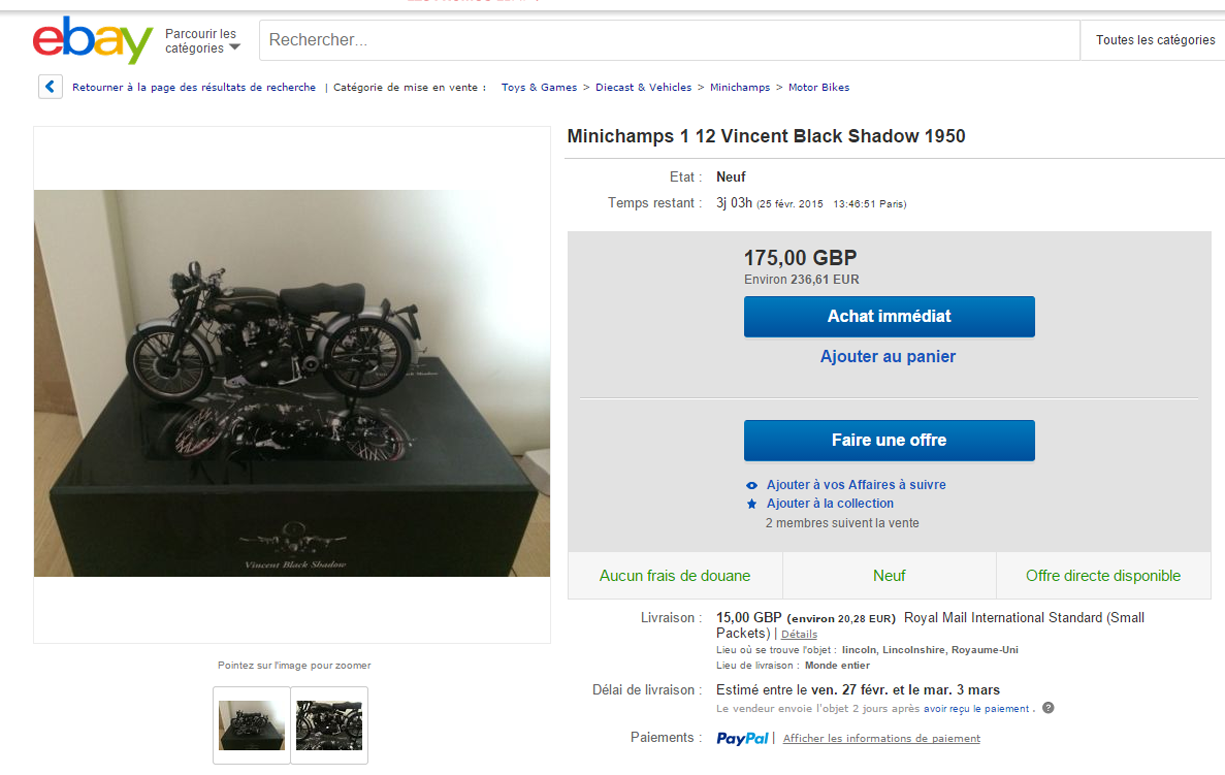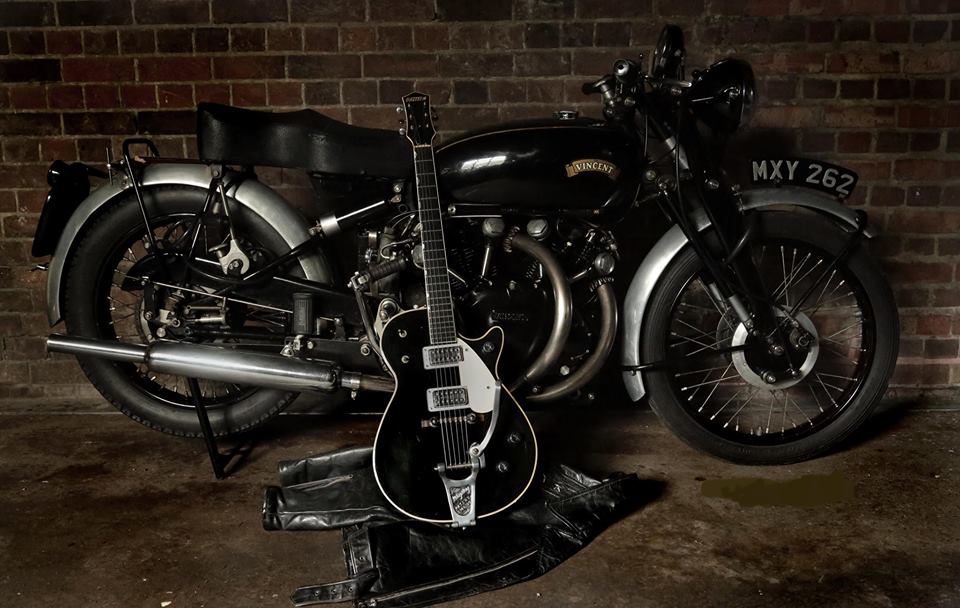VINCENT HDR Black Shadow
La Vincent Black Shadow 1 000 cm3 1950, est la moto la plus puissante et la plus rapide de son époque.
En 1928, Philip Vincent achète la marque et l'outil de production HRD. Tout naturellement, la firme est rebaptisée Vincent HRD.
Pour l'anecdote, les premiers logos portaient l'inscription "HRD" en gros et "Vincent" au-dessus, en plus petit. En 1949, ce logo sera remanié, mettant "Vincent" dans un bandeau au-dessus de "HRD" et de la même dimension, pour prévenir tout risque de confusion avec Harley-Davidson (H-D) sur le marché américain.
Jusqu'en 1934, la marque produisait sept modèles différents, dont quatre motorisés par un monocylindre de 499 cm³ imaginé par Vincent lui-même.
En 1931, l'ingénieur Phil Irving rejoint l'équipe Vincent. Il crée un bicylindre de 998 cm³ développant 45 chevaux. Il était couplé pour la première fois à une boîte à quatre rapports avec sélection au pied. Ce moteur prenait place dans une nouvelle moto, présentée en 1936 sous le nom de Rapide. Elle inaugurait une nouvelle suspension arrière cantilever qui sera utilisée sur toutes les Vincent jusqu'en 1955.
En 1948, Vincent présente la Black Shadow. Sur une base de Rapide, le moteur et la boîte de vitesse reçoivent un traitement noir. Le gain de puissance, par rapport à la Rapide, est dû au polissage des pièces internes du moteur et de la boîte. Son compteur Smith indiquait 150 mph, mais elle se contentait d'un petit 125 en pointe. Ce fut la première moto de série à dépasser les 200 km/h.
Mais la Vincent la plus spectaculaire est probablement la Black Ligntning. C'est une Black Shadow préparée pour la course. N'étant pas prévue pour circuler sur route, elle subit une cure d'amaigrissement en abandonnant toute la panoplie d'instruments réglementaires (phares...) et de confort (selle monoplace). Le moteur est optimisé pour délivrer 70 chevaux. 31 Black Lightnings seront construites, ses succès en course partout dans le monde contribuant à la réputation de performance des Vincent.
Mais, en 1955, Philip Vincent annonce que la firme arrête la production. Perdant trop d'argent, et plutôt que de réduire les coûts de production en baissant la qualité, l'équipe dirigeante préféra mettre fin à l'aventure Vincent.
Model history[edit]
Series C Black Shadow
Closeup of Series C engine
The first model from Vincent was the Rapide, followed by the Black Shadow in response to a demand for a more "sports oriented model". The Black Shadow was developed from an early-model Rapide that had been specially tuned by factory tester and racer George Brown, his brother Cliff and designer Phil Irving. With relatively minor modifications, such as enlarged ports, bigger carburettors and increased compression, the test model, known as "Gunga Din",[citation needed] gave 55 bhp (41 kW), creating the basis for the Black Shadow. The Black Shadow proved very popular and its production overtook the Rapide. The Black Shadow's engine, instead of being cradled in a set of frame rails, was suspended from above, becoming a stressed member, or integral part, of the structure.
The Black Shadow featured several new technological innovations, such as: an original alternative to the primitive telescopic front forks of the day, a sprung rear sub-frame, extensive use of aluminium alloy, and a unit construction stressed engine. Overall weight was a relatively light 458 lb (208 kg). While other contemporary motorcycles tended to be polished and chromed, the "Black Shadow" was unusual in being predominantly black. The black enamel crankcase was effective both for marketing and heat dissipation. Some 16 "White Shadows" were built, made to Shadow specification but with the Rapide's plain aluminium finish. Fewer than 1,700 Vincent Black Shadows were made, all hand-assembled.
In 2007, The Vincent H.R.D. Owners Club commissioned the VOC Spares Company Limited to build a replica Black Shadow from new parts.[citation needed] Amongst other things, the project was to prove that all the parts were in stock and available from the VOC Spares Company Limited. Having received many glowing reports from the motorcycle press in the UK, the machine was eventually auctioned by Bonhams and now resides with a Member of the Vincent H.R.D. Owners Club in New Zealand.
Journalist Hunter S. Thompson wrote that, "If you rode the Black Shadow at top speed for any length of time, you would almost certainly die." and praised the model in his 1971 novel, Fear and Loathing in Las Vegas.
